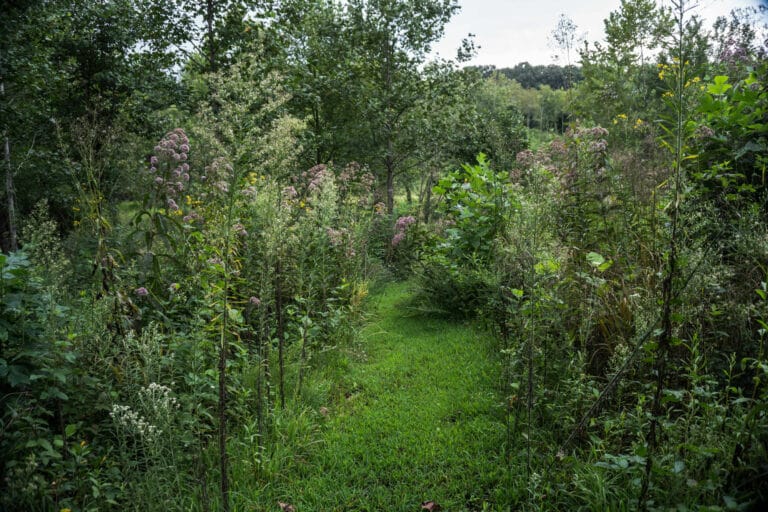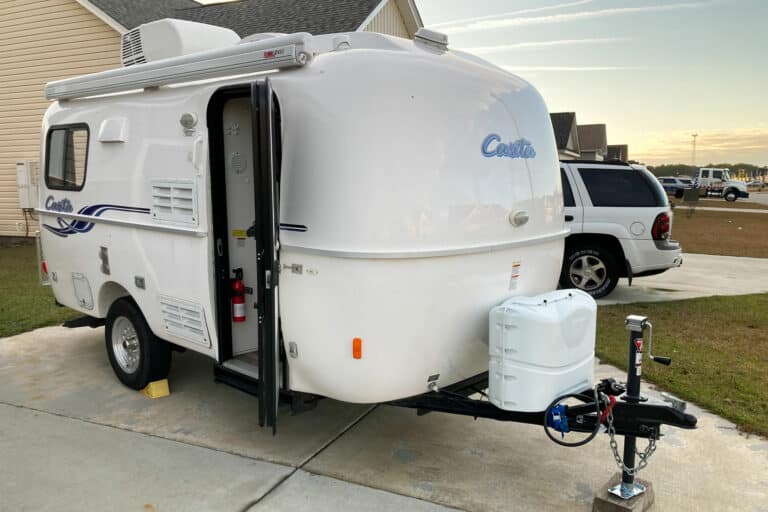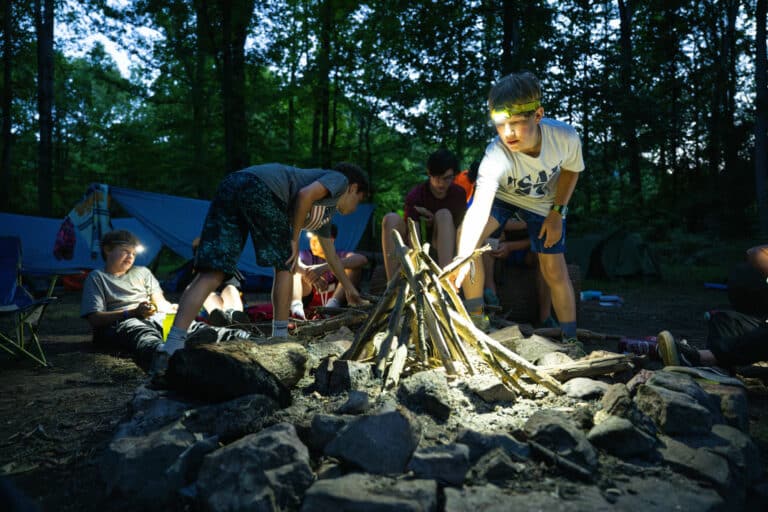Freeriding is punk rock. It is the opposable thumb. The duck-billed platypus. Freeriding is evolutionary.
Ask anyone in the bike industry, and they will tell you the same—freeriding is the future of mountain biking. The stunt-heavy form of mountain biking uses wooden structures, dirt jumps, and massive rock drops to test a biker’s technical skills, representing a huge evolutionary leap in the biking world. The new style of riding is largely responsible for breathing life into a stagnant mountain bike industry while simultaneously turning British Columbia into the world’s top mountain bike destination. The acrobatic style of riding was born in the forests and ski resorts of Canada and has been gaining popularity in the western half of the United States over the last several years. States like Oregon and Montana are building freeride features into the management plans of their state parks, county parks, and to some extent, their national forests. Several ski resorts across the country have enhanced their lift-served bike programs by building extensive downhill and freeride parks. Industry insiders are touting freeriding as the future of mountain biking. While commenting on the proliferation of legal freeride parks in 2007, Scott Linnenburg, field program director for IMBA, said freeriding has finally moved “from the back of the woods to the forefront.” Big air has a big future. Except maybe in the Southeast. While the sport grows to “king of the mountain” status in the Western half of the U.S. and Canada, the freeriding community here is still struggling to move past outdated stereotypes and earn the respect of the South’s land managers. Other than the massive lift-served Monster Freeride Park at Snowshoe, legal freeride terrain is almost non-existent in the land of Dixie. A fact that begs the question: if freeriding is mountain biking’s future, why is the South being left behind?
“People look at freeriders as a bunch of rogues,” says Mike Swanson, a fixture on the South’s frustrated freeriding scene. “But that comes from a misunderstanding of what freeriding is. Yes, freeriding is about big drops and skinnies 20 feet off the ground, but really, freeriding is about taking a chance and riding outside your normal boundaries. When you see a rock, instead of rolling around it, maybe you bunny hop over it. That’s freeriding. It’s like playing music. You put your own interpretation on it, like Jazz.”
Swanson is the land manager and event coordinator for Pee Wee’s Mountain Bike Park in Lincolnton, North Carolina. If the southern freeride community has a home, a Yankee Stadium, it is Pee Wee’s. The 44-acre park has 8.5 miles of singletrack, a dirt jump park, and more wood than a lumber factory. The North Shore style park is perhaps the South’s most extensive stunt park outside of Snowshoe’s Monster Park, with drops, jumps, skinnies, and wall rides tailored to all level of riders from kids to professionals, all of which is situated on private land. And it’s all legal, a rare thing in the South where most public and private land managers shy away from freeride terrain.
“The main concern is liability,” Swanson says. “We live in a litigious society nowadays and few land managers want to take that responsibility.”
The lack of legal trail systems in the Southeast leaves a large gap in our region’s mountain biking portfolio, a gap that many freeriders have taken upon themselves to fill by building illegal stunt parks. Scattered throughout the Southeast (and the entire country), small freeride parks have been built anonymously on vacant tracts of private and public land. Individuals and small groups work diligently
to create wooden stunts, dirt jumps, flow trails, and downhill parks on remote pieces of land hoping to stay under the radar for as long as possible. As soon as the parks are discovered by landowners, worried parents, or forest rangers, the features are torn down and the builders are back to square one.
The Hick Hucksters are a group of freeriders based in Boone, North Carolina that have helped grow the sport in the Southeast over the last several years by creating an online hub of information, videos, and pictures. Five years ago, the Hick Hucksters’ enthusiasm got the better of them, landing the group in a whirlwind of legal trouble when they built an un-permitted freeride trail in the Wilson’s Creek area of Pisgah National Forest.
The trail was dubbed Nam, and it made the best of the natural freeride terrain that Wilson’s has to offer. The Hucksters were busted at gunpoint by forest rangers during a “work day” on Nam, and the group received a bevy of legal penalties including a 90-day ban from all national forests.
“Even though we didn’t know it at the time, what we did was illegal and we all learned our lesson,” says Brian Tunstill, a founding member of the Hick Hucksters. “I hope others can learn from our situation, but unfortunately, renegade trails aren’t a thing of the past in the freeride community.”
Since the Hucksters were caught and sentenced, illegal freeride trails have only grown in number. Some of the freeride parks are public hazards, shoddily built and rarely maintained, while others are masterpieces of art and function, the graffiti art of the biking world. Regardless of the quality of the trails, all of them built without permission of the landowners are illegal. And while these trail systems serve as the primary outlet for freeriding in the Southeast, some would argue that they only hold the freeride community back from its ultimate goal of legitimacy.
“Freeriding is so young around here. People are dying to build jumps and stunts. Unfortunately, most of them don’t have the patience to go through the legal channels,” says Adam Stevens, owner of Marathon Bicycle Company in Fayetteville, West Virginia, a haven for freeriders in the Mountain State.
The illegal parks are largely responsible for the general public’s notion that freeriders are nothing more than trespassers and vandals.
“As long as freeriders keep building illegal trails, giving up on the notion of having legal trail systems, the public perception of freeriding is never going to change,” says Jeff Gandy, president of the Southern Offroad Freeriders Association (SoFa) an affiliate of SORBA. “So much effort goes into building these illegal trails, but for what? Just to have it torn down? It’s a waste.”
——————-
THE FUTURE IS NOW
“The natural terrain in the Southern Appalachians is phenomenal,” says Brian Tunstill. “The potential for freeriding here is so high, but the East Coast is about ten years behind the West Coast in regards to accepting freeriding.”
The lack of legal freeride terrain in the Southeast is what frustrates Tunstill and most freeriders in the region, who see themselves as an untapped demographic waiting to be discovered.
“Take a look at snowboarding,” Tunstill says. “Ten, 20 years ago, people didn’t understand that sport either. They thought it was a bunch of rogue kids hauling ass down the mountain on boards. Now, snowboarding is probably ten times more popular than skiing. Freeriding is still in the process of being discovered by society in general.”
The few forward thinking individuals and companies that have discovered Southern freeriders are reaping the benefits. When Snowshoe opened their lift-served freeride park in 2004, the mountain increased their summer bike business by almost 200% according to the National Ski Area Association’s figures. As one of the only legal outlets for freeriding in the South, Pee Wee’s has become a mini-destination on its own, attracting riders from several surrounding states and hosting an annual mountain bike festival that attracts industry sponsors and big crowds. Even more telling is the fact that lawsuits have not plagued Snowshoe or the owners of Pee Wee’s. Swanson mitigates the legal concerns surrounding Pee Wee’s by charging a $2 trail fee and demanding each rider sign a waiver of liability before being able to ride the park. It’s a system borrowed from ski resorts who use an individual’s purchase of a lift ticket as a waiver of liability.
These are the success stories that have freeriders hoping other land management agencies will soon warm up to freeriding. Jeff Gandy and SOFA are among the few freeriders in the Southeast who have enjoyed an amount of success with public landowners. Thanks to SOFA’s affiliation with the hugely successful SORBA, the freeride club has managed to build legal stunt terrain on public land. Central Park is a stunt park located just north of Atlanta with dirt jumps, wooden structures, and a four-cross course in the works, all of which is located at a county park. Ridgeway Park is a downhill course with two trails featuring rock drops, jumps, and berms located at Carter’s Lake, a swath of forest owned by the Army Corps of Engineers. SOFA has even added freeride terrain to popular trail systems like Blanket’s Creek and Big Creek in metro Atlanta.
By following a series of protocols that includes waivers, stunt building standards, and proper signage, parks like Pee Wee’s and Central Park are able to avoid the legal exposure that most landowners fear.
Adam Stevens looks at the few established parks in the Southeast and hopes they are the beginning of an evolution in freeriding. Stevens is the mastermind behind the soon-to-be-opened Fayetteville Freeride Park, the first municipal freeride park in West Virginia. He won a grant from the Department of Transportation, and the town of Fayetteville is allowing him to build a stunt park on 10-15 acres of land free of charge. Stevens sees the park as a giant step toward true legitimacy for freeriders.
“The park is designed to introduce people and land managers to freeriding,” Stevens says. “We’re easing the public’s fears about freeriding with this park. It’s not what you see on the videos. It’s very family oriented. We’re even going to build a place for kids on training wheels. You’ll be able to bring your four year old and help him ride a bridge. That’s where I want to go with freeriding. I want to lose the stigma of freeriders as rebels on bikes.”
Stevens compares his freeride park to the skate parks that are so popular in municipalities these days. “Skaters were frowned upon years ago, now skate parks are everywhere. My vision is to take this park in Fayetteville, document what it can do for a town, and then take the concept to other cities.”
Encouraging cities and counties to include freeride parks may be easier than convincing large land managers like the Forest Service to allow bikers to create freeride trails in their forests. The methods used to eliminate litigation at a self-contained city park (gates, signage, trail fees, waivers) aren’t as easy to implement in widespread national forests. But freeriders in Western states like Montana have had some success with national forests, and southern freeriders still hold out hope.
“I think if we work with established mountain bike groups like SORBA that already have a relationship with the Forest Service, it could happen,” says Jeff Gandy of SOFA. “We have examples with Carter’s and Central Park that these areas can work. At the same time, freeriders shouldn’t expect to have a full-blown downhill course carved out of Forest Service land within a year. Start small. That’s the plan.”
Adam Stevens gets excited about the prospect of moving legal freeriding into our national forests. “There is tons of natural freeride terrain in the mountains of West Virginia. Look at all the rock inside the New River Gorge. There are tons of drops everywhere. Once we start building a base of freeriders, my wet dream is to head into the forest and start developing legal freeride stunts over natural terrain. We probably won’t ever be able to build structures, but we can use downed trees, rock faces, and move a little dirt here or there. Within 15 years, I see us being able to do a lot with the permission of the national forest. And freeriding will explode in the Southeast if the bikers have the right venues. The area and the bikers are prime for it.”







